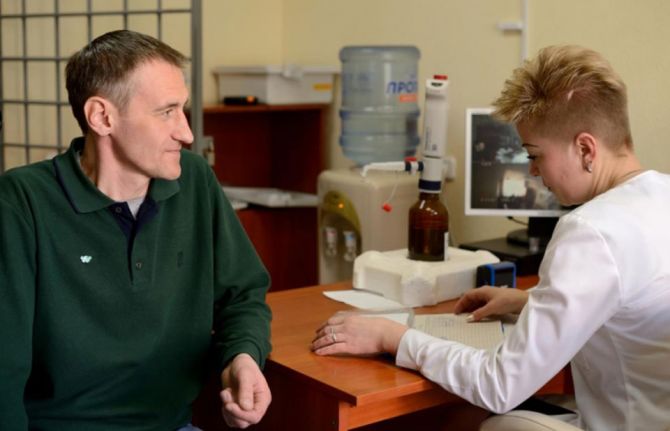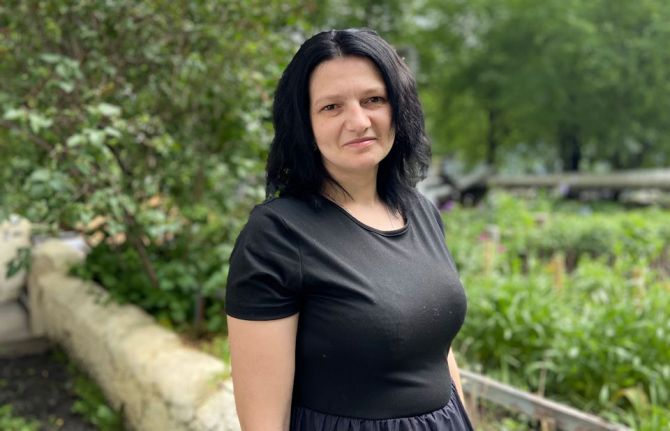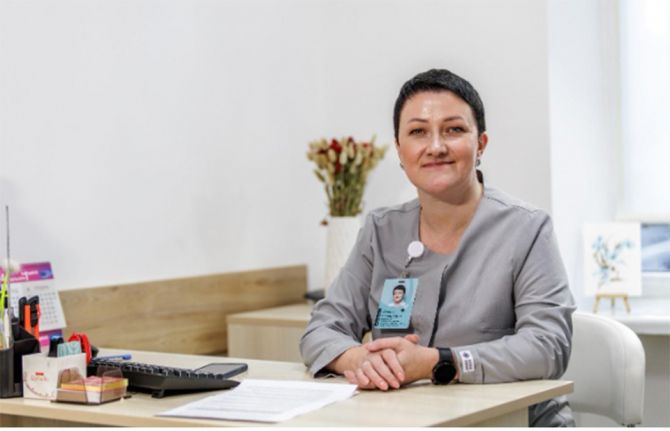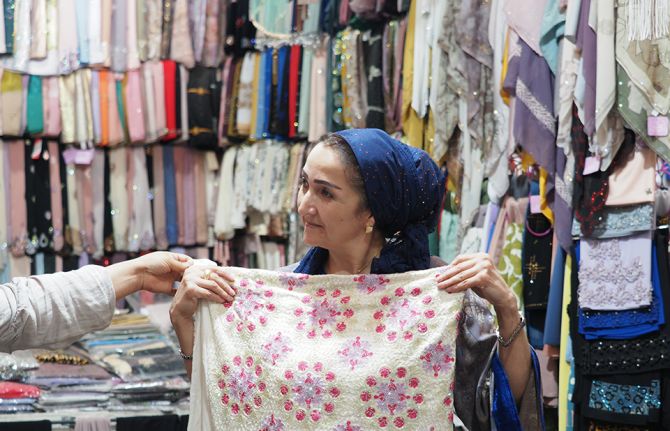

Feature Story
Turning his life around with harm reduction in Belarus
18 July 2017
18 July 2017 18 July 2017The 2030 Agenda for Sustainable Development takes to scale what the AIDS response has been working towards for 30 years—a multisectoral, rights-based, people-centred approach that addresses the determinants of health and well-being. The individual stories in this series highlight the linkages between HIV and related Sustainable Development Goals (SDGs), each told from the personal perspective of people affected by HIV. The series paints a picture of how interconnected HIV is with the SDGs and how interdependent the SDGs are with each other. Most importantly, the stories show us the progress we have achieved with the AIDS response and how far we have left to go with the SDGs.
After nearly 15 years of injecting drugs, Sergey gave up hope. He had tried a number of times to kick his addiction, but he had failed miserably.
In 2009, in a last ditch effort, he enrolled in the Belarus Opioid Substitution Therapy Programme.
“My relatives did not believe this programme would help me and thought of it as just another hopeless attempt to quit drug use,” Sergey said.
His biggest challenge, he explained, was to prove to doctors and his relatives that he really wanted to stop injecting drugs and that this would help him cope with his drug addiction.
He comes every day to the government opioid substitution therapy (OST) centre in Minsk to receive a medical dose of methadone, which helps to alleviate his dependence on opioids.
A friend who lived in Germany told him about harm reduction and substitution therapy, but he never believed that one day it would be available in Belarus.
Sergey is one of nearly 900 people enrolled in the OST programme, which started in 2007 with a grant from the Global Fund to Fight AIDS, Tuberculosis and Malaria. It includes the provision of methadone under strict medical supervision, regular medical check-ups, psychological support and social work services. In addition, OST helps people living with HIV who used to inject drugs to maintain adherence to their daily regimen of antiretroviral therapy.
Today there are 19 government OST sites across Belarus, but these still cover less than 5% of people who inject drugs in the country. Belarus wants to increase coverage to at least 40% of people who inject drugs in order to lower the number of new HIV infections among people who inject drugs.
In Sergey’s case, the programme helped him turn his life around. Not only did he get a job and keep it, but he suddenly had plans for himself.
SDG 3: Ensure healthy lives and promote well-being for all at all ages
Good health is a prerequisite for progress on ending AIDS. Ensuring healthy lives and promoting well-being for all at all ages, including people living with or at risk of HIV, is essential to sustainable development. For example, successfully ending the AIDS epidemic will require enormous health service scale-up, with a focus on community services, targeted testing strategies, ensuring treatment is offered to people following diagnosis (including regimes appropriate for babies, children and adolescents), and regularly support and monitoring for people on antiretroviral medicines. Eliminating mother-to-child transmission of HIV depends on providing immediate treatment to pregnant women living with HIV, integrating HIV and sexual and reproductive health services, and engaging male partners in prevention and treatment services.
Increasing service integration in a way that responds to individuals’ needs—whether that be combining tuberculosis (TB) and HIV services or providing youth-friendly HIV, sexual and reproductive health services—leads the way in reshaping efficient, accessible and equitable health services for HIV and beyond. HIV can be ended only by promoting the right of all people to access high-quality HIV and health services without discrimination.
The following stories explore how inextricably linked SDG 3—ensure healthy lives and promote well-being for all at all ages—and ending AIDS are. For every individual, protecting and maintaining good health underpins the capacity to fulfil their multiple roles within family, community, society and the economy. Mona’s story recounts her struggles with HIV and TB, discrimination, and the right to be treated fairly and with dignity. Lidia works with partners in the health services, community health system and private sector to ensure female seasonal coffee pickers are given the information and services they need to prevent mother-to-child transmission of HIV. Sergey describes his experience of how a harm reduction programme helped him overcome his addiction while adhering to antiretroviral therapy. Christine tells her story of how, as a community health worker, she reaches out to women where and when they need her to prevent mother-to-child transmission.



